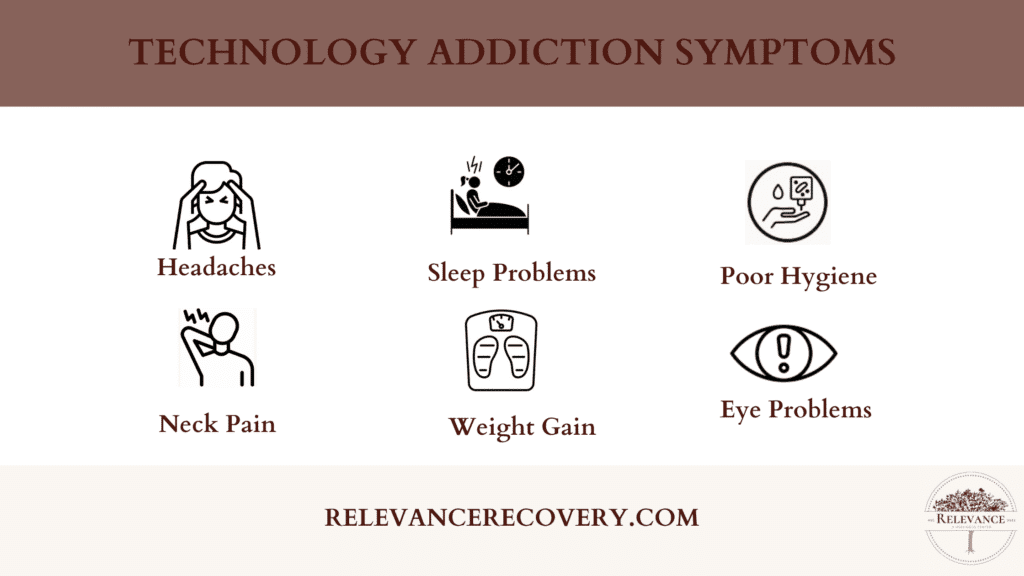The growing popularity of digital devices raises the concern about technology addiction in youth. Technology has permeated every aspect of human life, making it difficult to envision a world without the Internet. Millennials and Gen Z comprise a significant number of online users. Our lives, particularly those of youth, have become increasingly reliant on technology. Be it education, entertainment, or healthcare, it has encircled every field. Smartphone dependency statistics show that around 44% of teenagers struggle without a technology break. This growing dependence has raised alarming concerns about addiction. With technology usage largely unregulated, the risk of misuse and addiction is high. However, one can deal with this with awareness of technology’s right and wrong usage. In this blog, we will talk about technology addiction in youth and share strategies to resist such addiction.
Understanding Technology Addiction in Youth
Technology addiction refers to dependence on digital devices to the extent that it disrupts one’s normal functioning of life. A technologically addicted person finds it challenging to resist using technology even after knowing it’s harmful to them. Nowadays, technology dominates a more significant part of our work and social life, making it easier to get trapped in the clutches of addiction. A Pew Research Center survey found that 45% of teenagers are online almost constantly, and 60% felt that spending too much time with technology is a significant problem facing their generation. This major problem includes neglect of responsibilities, social withdrawal, and negative consequences. It can manifest in various forms in an individual through social media, online gaming, internet browsing, or compulsive smartphone use. Promoting healthy usage of such devices is essential before its effects become unrepairable. Let’s now understand how to spot signs of technology addiction in youth.

There is a heavy reliance on digital devices for communication, entertainment, and academic purposes. It makes it difficult to differentiate whether one’s usage of technology is normal or an addiction. Below are some signs of technological addiction that can help in this differentiation:
Technology addiction is negligence and ignorance regarding the harmful use of technology. Therefore, awareness of these causes and effects is essential to be familiar with their addictive nature.
Technology addiction has the power to bring tremendous change in the life of an individual. Its impact on an individual’s health depends on various factors, such as type of technology, frequency of use, and individual behaviors. Technology impact can be both positive and negative. However, it depends on how one uses it in their daily lives. If used as a source of information, knowledge, and comfort, it can positively transform one’s life. However, it can have severe interference and disturbance in one’s life if not used wisely.
Research by Embark Behavioral Health shows that increased screen time causes a rise in attention-deficit/hyperactivity disorder (ADHD), adolescent anxiety, depression, and suicide risk factors. Additionally, using electronic devices before bedtime can disrupt one’s sleep cycle and negatively impact overall well-being. While technology has revolutionized communication and connectivity, excessive reliance on digital interactions may lead to social isolation and loneliness, which in turn can worsen various mental health issues. Therefore, the impact of technology on an individual’s life varies depending on how they use it.
FAQs
Some of the leading causes of technology addiction in youth include social influence, easy technology accessibility, instant gratification, and limited access to alternative activities.
Technology addiction can impact the overall well-being of youth. A person with addiction experiences a lack of focus, productivity, and several mental and physical challenges.
Regulating technology use is essential to avoiding addiction. One can practice this by setting digital boundaries and keeping track of screen time.
Excessive use of technology can lead to anxiety, stress, and depression among young people. It can also cause sleep problems that affect one’s mental state.
When identifying technology addiction in youth, it’s essential to pay attention to changes in their behavior. It could include signs such as becoming easily irritated, neglecting their responsibilities, withdrawing from social situations, and showing little interest in other activities.
It is easy to become addicted to technology when we rely on it for nearly everything. However, with awareness and mindful use, we can avoid falling prey to this addiction. Various resources and support available can assist individuals in overcoming technology addiction. By setting digital boundaries and encouraging a balanced approach to technology usage, we can reduce technology addiction in youth. Moreover, even if one is not already addicted to technology, practicing digital detox can be a valuable exercise for experiencing a happy life even in the absence of the internet.